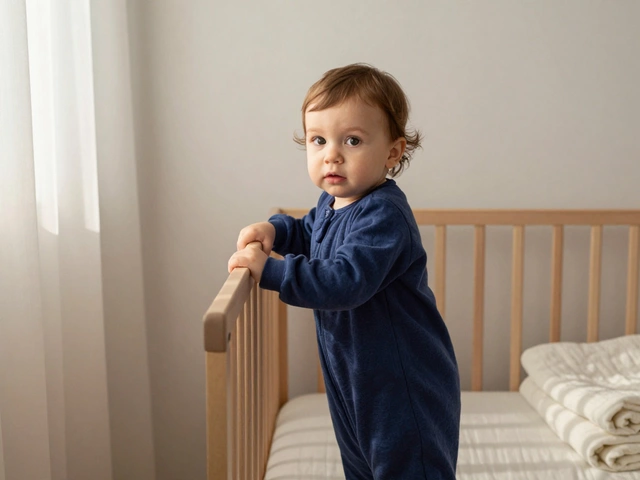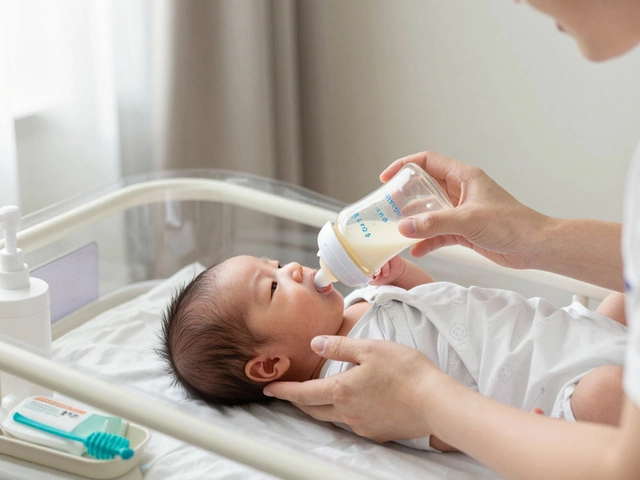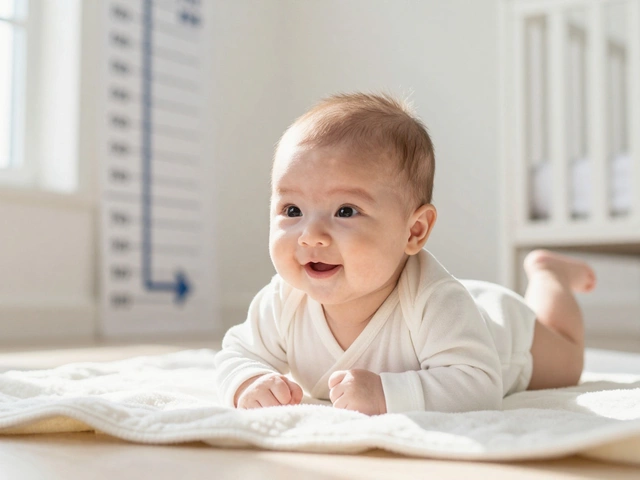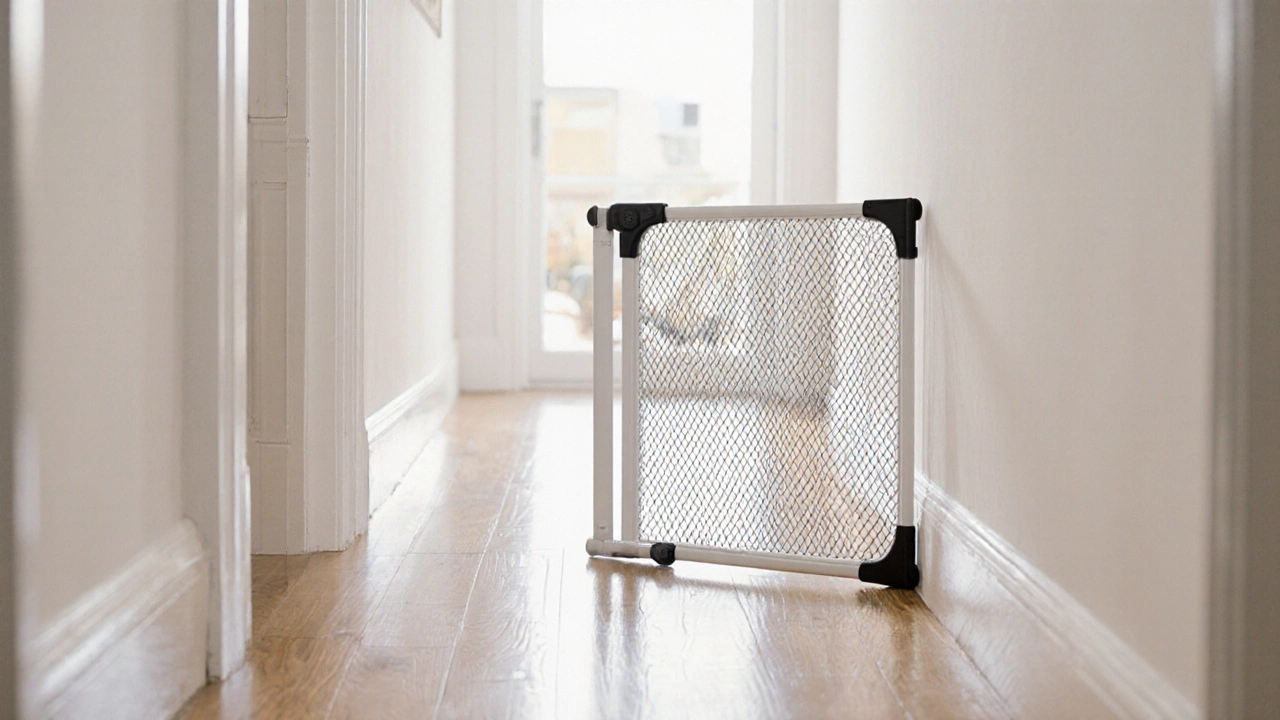
Accordion Baby Gate Safety Checker
Gate Specifications
Safety Assessment
When it comes to toddler-proofing a home, Accordion baby gate is a foldable, hinged barrier designed to block stairways or doorways while allowing easy storage. Also known as fold‑up gate, it typically uses a pressure‑fit system to stay in place without permanent hardware. Parents often wonder whether this convenience comes at the cost of safety. Below we break down everything you need to know - from core safety features and installation tricks to how accordion gates stack up against other styles.
Key Takeaways
- Accordion gates meet the same British safety standard (BS EN 1930) as other approved gates.
- Proper installation - using a sturdy wall, checking for pressure loss, and adding edge protection - eliminates most collapse risks.
- Look for a reliable latch mechanism with a child‑proof lock and sturdy mesh material that won’t sag.
- When comparing gate types, accordion gates excel on space‑saving and portability, while hardware‑mounted gates offer the strongest attachment.
- Follow our checklist before buying to ensure the gate you choose truly protects your little explorer.
What Makes an Accordion Gate Safe?
Safety isn’t a single feature; it’s a bundle of design choices that together meet the BS EN 1930 criteria for child barriers. The most critical elements are:
- Pressure‑fit integrity - The gate must compress against both sides of a doorway with enough force to resist a child’s push. Look for a minimum of 30kg of pressure‑fit rating, which manufacturers usually list on the packaging.
- Latch reliability - A latch mechanism should require a two‑step action (push‑down then pull‑up) that a toddler can’t mimic. A separate child safety lock adds a second layer.
- Material strength - High‑density mesh material (often steel or reinforced aluminum) must support at least 150kg before deformation.
- Edge protection - Rubber or silicone padding on hinges and mounting bars prevents bruises if a child bumps the gate.
- Stability testing - Reputable brands publish results of drop‑test and torque‑test procedures, proving the gate won’t tip over under normal household forces.
Installing an Accordion Gate Correctly
Even a perfectly designed gate can become a hazard if it’s not installed right. Follow these steps for a rock‑solid fit:
- Measure the doorway width at floor level and add 2cm on each side - this is the range the gate’s pressure‑fit arms can cover.
- Place the gate in the opening and press the arms firmly against the walls. You should feel a pronounced click indicating the spring‑loaded tension is engaged.
- Check the installation hardware (usually a rubber‑coated foot and a tension‑adjustment knob). Tighten the knob until the gate does not wobble when you apply 10kg of sideways pressure.
- Attach the edge protection pads to any exposed metal parts.
- Test the latch mechanism by pulling it open three times in a row - it should snap shut each time without sticking.
- Finally, set the child safety lock. Verify that an adult can open the gate with a single hand, while a child would need a coordinated two‑hand motion.
Re‑check the pressure fit every month, especially after cleaning or moving furniture that might shift the walls.
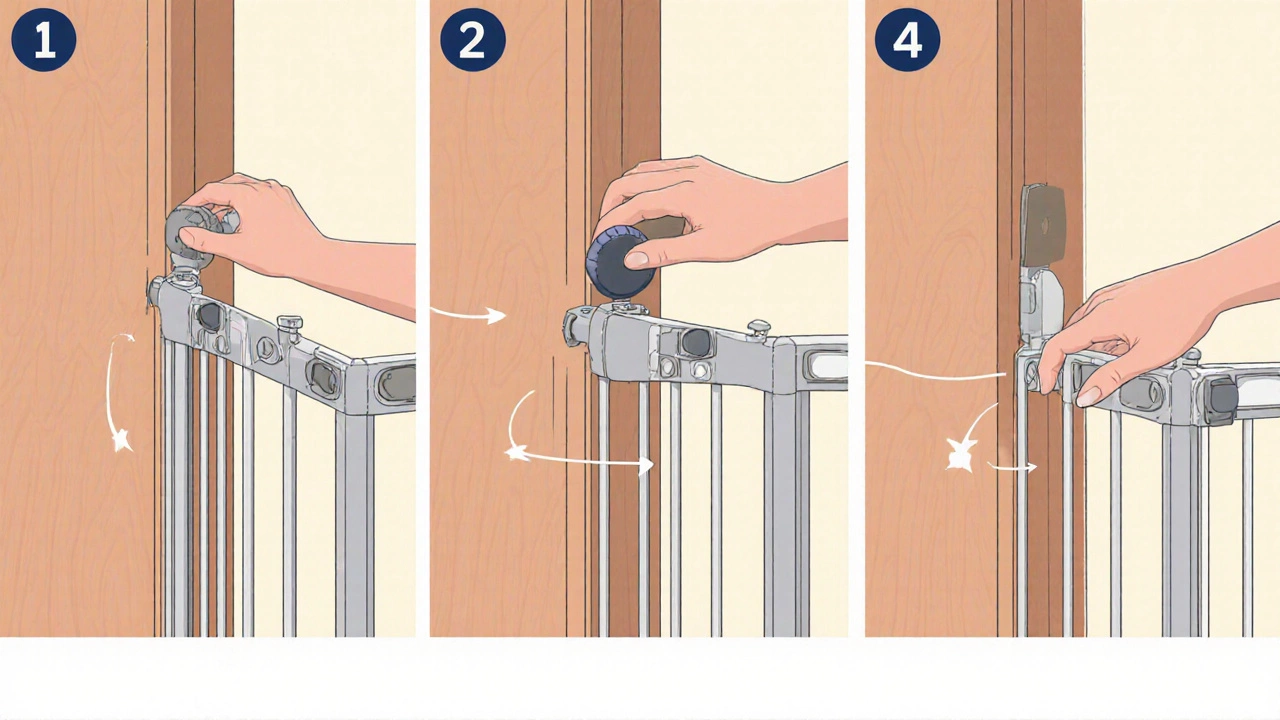
Accordion Gate vs. Other Gate Types
Choosing a gate isn’t just about safety; you also weigh space, aesthetics, and permanence. The table below compares the three most common styles.
| Feature | Accordion Gate | Pressure‑Mounted Gate | Hardware‑Mounted Gate |
|---|---|---|---|
| Installation | No drilling; uses tension arms | Similar tension system, usually bulkier | Requires screws into studs or wall anchors |
| Space Efficiency | Folds flat, ideal for narrow hallways | Often wide, takes up more clearance | Fixed width; cannot be stored when not needed |
| Safety Rating | Meets BS EN 1930 (200kg load) | Meets BS EN 1930 (150kg load) | Meets BS EN 1930 (250kg load) |
| Child‑Proof Latch | Two‑step push‑down/pull‑up, optional lock | Simple latch, may lack extra lock | Heavy-duty latch with lock, best for stairs |
| Portability | Easy to fold and move | Bulkier, harder to transport | Permanent; not portable |
| Cost Range (UK) | £45‑£120 | £30‑£90 | £70‑£180 |
How to Choose a Safe Accordion Gate
Use this short checklist before you hit ‘Add to Basket’:
- Certified to BS EN 1930 - look for the label on the product page.
- Pressure‑fit rating of at least 30kg per side.
- Sturdy mesh material (steel or reinforced aluminum) that doesn’t bend under weight.
- Two‑step latch plus a separate child safety lock.
- Rubber‑coated hinges and metal edges for bruising protection.
- Adjustable tension knob - essential for uneven walls.
- Positive customer reviews that mention long‑term stability.
If a gate misses any of these points, keep looking. The cheapest options often skip the safety lock or use flimsy mesh, which defeats the purpose.
Common Concerns and Troubleshooting
Even after a perfect install, you might hit a snag. Here’s how to address the most frequent issues:
- Gate feels loose after a few weeks. Re‑tighten the tension knob and ensure the floor isn’t carpeted with a thick rug, which can reduce friction.
- Latch won’t close fully. Check for debris in the latch slot; a small piece of paper can obstruct the spring.
- Children can climb the gate. Add a “top rail” clamp (available from most manufacturers) to prevent climbing over the mesh.
- Gate won’t stay open. Many models have a ‘hold‑open’ position; make sure the gate is fully extended before releasing the latch.
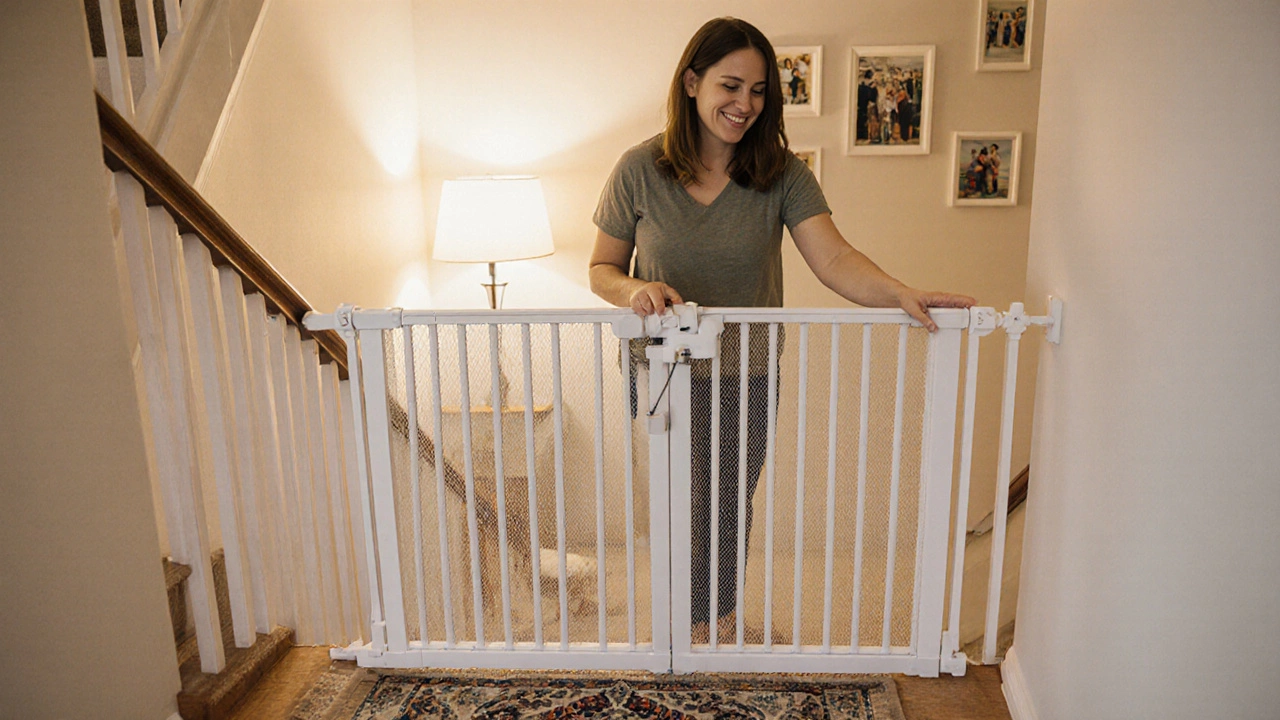
Real‑World Experiences
Emma, a mum of two in Bristol, shared her story: “We bought an accordion baby gate for the top of the stairs because we move homes often. The first week it felt a bit wobbly, but after adjusting the tension knob and adding the supplied edge‑pads, it’s held up perfectly. My son can’t push it open, and I can fold it away when we have guests.”
Another parent, Luis from Manchester, noted a drawback: “The mesh was great for visibility, but after a month the spring lost a little tension. We contacted the brand, and they sent a replacement tension knob - a good reminder to keep the warranty info.
Maintenance Tips to Keep Your Gate Safe
Safety is an ongoing task. Follow these simple steps each month:
- Wipe down the mesh with a damp cloth; avoid harsh chemicals that could corrode metal.
- Inspect hinges for rust; apply a thin layer of silicone spray if needed.
- Test the pressure fit by pushing the gate side‑ways with about 10kg of force.
- Check the child safety lock for smooth operation; lubricate if it feels stiff.
- Review the warranty card - most manufacturers cover defects for two years.
Bottom Line
Accordion baby gates are a safe, space‑saving solution when you pick a model that meets the accordion baby gates safety standards, install it correctly, and keep up with basic maintenance. They’re especially handy for renters, families who travel, or anyone who needs a gate that folds away without drilling. If you need the most rock‑solid attachment for a high‑traffic stair, a hardware‑mounted gate might still be the best choice, but for most day‑to‑day scenarios, a well‑chosen accordion gate does the job beautifully.
Frequently Asked Questions
Do accordion baby gates meet UK safety regulations?
Yes. Reputable brands certify their gates to BS EN 1930, the same standard required for all child barriers sold in the UK. Look for the certification label in the product description.
Can I use an accordion gate on uneven walls?
The gate’s tension arms can accommodate slight variations (up to 2cm). For larger gaps, use a wall‑plate adapter that most manufacturers sell as an accessory.
How strong is the mesh - will it bend if my child leans on it?
High‑density steel mesh is rated for at least 150kg of static load. Normal leaning or pulling will not deform it. If you hear a squeak, check the hinges first.
Is the gate portable enough for holidays?
Absolutely. Most accordion gates fold to a size of under 30cm wide, fitting into a standard luggage compartment. Just remember to bring the tension knob and any edge pads.
What’s the best way to test the latch before buying?
In‑store demos should let you push the latch down and pull it up several times. A good latch will click firmly with each cycle and resist opening until you lift the safety lock.



